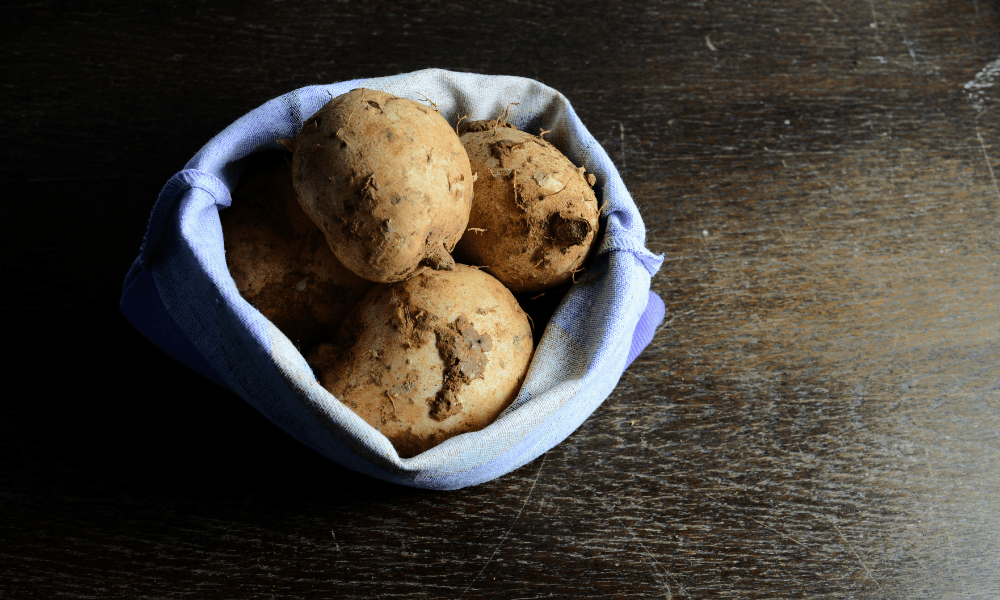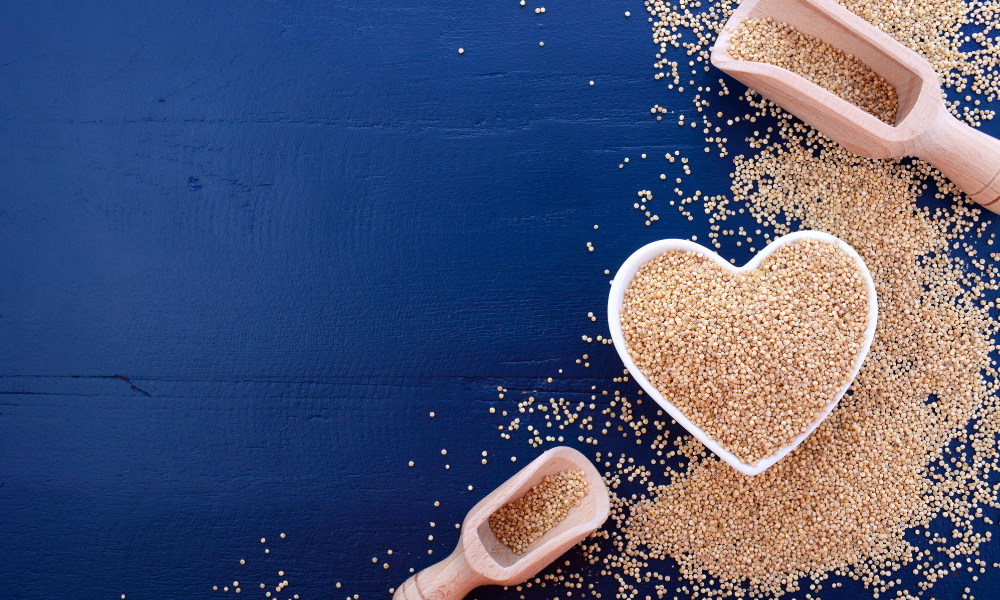Do you know amaranth? In the past, this pseudo-cereal was the basis of the diet of indigenous peoples in Central and South America, especially the Aztecs, Maya and Incas. Today, amaranth is known all over the world. Because of its impressive nutrient profile, it is used in a whole range of A wide range of health benefits have been associated with it. In this article, we want to clarify whether this is justified and what the benefits are.
About Amaranth
This versatile plant - which is also very nutritious - comes from the Amaranthaceae family. Its cultivation began a long time ago. There are 60 to 98 species of kiwicha (this is what the plant is called in the Andes) worldwide.
Because amaranth is one of the oldest cultivated plants in the world, it can be found on every continent on earth. Except, of course, in Antarctica, where it is too cold even for this robust pseudo-cereal.
Antioxidant, high in protein and fiber, gluten-free - these are just a few reasons, in addition to its taste, why amaranth could be a good addition to your diet. We'll take a closer look at the exact health benefits - and whether they are justified - below.
Amaranth or Amaranth?
You will often find the spelling amaranth, with an “h” at the end. According to Duden, this spelling actually refers to a dye, named after the dark red flowers of the amaranth.
The spelling without an “h” refers to the foxtail plant and its seeds, which are used as food. However, both spellings are common.
What is in Amaranth
The seeds contain many substances, including manganese, protein and essential amino acids such as lysine. These cannot be produced by the body itself. Calcium , magnesium , potassium , sodium, iron, phosphorus and are also present in high quantities.
Not to mention vitamins B1, B2 and B3 , important unsaturated fatty acids and tryptophan , which is needed for the production of serotonin. Although all these nutrients do not make amaranth a miracle weapon in a healthy diet, they do play their part in maintaining physical well-being.
As a study published in the journal Brain Research Review shows, manganese, of which amaranth contains a sufficient amount, is particularly important for brain function and is said to protect against certain neurological diseases.
This pseudocereal also contains magnesium. The trace element is involved in many of the body's processes, including DNA synthesis and muscle contraction, as a 2015 review shows.
Finally, phosphorus is important for bone health, while iron helps the body produce blood.

Amaranth and the health benefits
But let's take a closer look at the - real or alleged - health benefits of amaranth.
It could help you lose weight
Due to its high protein and fiber content, amaranth is a good addition to your diet and can also help with weight control.
For example, a study published in the American Journal of Clinical Nutrition found that a high-protein breakfast can lower levels of ghrelin, the hormone that stimulates hunger.
Another study conducted at the University of Washington School of Medicine in Seattle, USA, showed that a high-protein diet was associated with a reduction in appetite and calorie intake.
The reason: the fiber moves slowly and undigested through the gastrointestinal tract. This ensures a longer feeling of satiety. Of course, further research is needed in this area to confirm the results shown in studies.
Amaranth could reduce inflammation
Amaranth is said to have anti-inflammatory properties in the body.
As a refresher: Inflammation is a completely normal immune reaction that is designed to protect the body from injury and infection. However, if this inflammation becomes chronic, it can become the cause of other diseases. This is evident in diseases such as cancer, diabetes and autoimmune diseases.
In fact, a study presented in the journal Molecular Nutrition & Food Research found that amaranth was able to reduce various inflammatory markers in the body.
An animal study confirmed something similar: Amaranth helped inhibit the production of immunoglobulin E, a form of antibody involved in allergic inflammation.
But here too, further studies are needed to confirm the potential anti-inflammatory effects of amaranth in humans.
It contains many antioxidants
Amaranth is rich in various antioxidants , which are chemical compounds that can protect the body from disease.
An animal study published in the scientific journal Plant Foods for Human Nutrition showed that amaranth increases the activity of certain antioxidants and also helps protect the liver from alcohol.
Another study from 2011 looked at the phenolic acids that are also found in amaranth. Phenolic acids are plant compounds that act as antioxidants. These include gallic acid, p-hydroxybenzoic acid and vanillic acid, all of which can help protect against heart disease and cancer.
In fact, the level of antioxidants is highest in raw, unprocessed amaranth.
Again, further studies are needed to determine more precisely how the antioxidants in amaranth can affect humans.

Amaranth is naturally gluten-free
Many grains contain gluten, which can cause negative symptoms such as diarrhea and flatulence in people with gluten sensitivity, according to a study published in
Journal of the American College of Nutrition , shows.
In people with celiac disease, eating gluten actually triggers an immune reaction in the body that causes damage and inflammation in the digestive tract.
Because amaranth is naturally gluten-free, it can be eaten safely by people who must follow a gluten-free diet. Other gluten-free grains include sorghum, quinoa , millet, oats, buckwheat and brown rice.
It could improve cholesterol levels
Bad cholesterol levels are a risk factor for cardiovascular disease.
An animal study presented in The Journal of Nutrition concluded that a diet containing amaranth could reduce total cholesterol by up to 30 percent and "bad" LDL cholesterol by up to 70 percent.
Of course, the results of these animal studies cannot be transferred 1:1 to humans. And here too, further research is needed to understand how amaranth affects cholesterol levels in humans.
Can you grow amaranth yourself? Yes!
Amaranth is naturally quite undemanding and basically only needs enough light to grow. It is sown in mid-April and can be harvested in September/October.
The leaves are edible, but it's best to choose younger ones, as they may taste less bitter. You can harvest the seeds by cutting off the flower heads and drying them. They will then fall out on their own.

How to prepare amaranth
The basic recipe is very simple: Boil the amaranth with at least twice the amount of water and then let it simmer for about 25 minutes on a low heat. Its consistency is mushy and not as firm as quinoa.
Amaranth goes well with many dishes thanks to its strong aroma and slightly nutty taste. You can enjoy it in soups, with meat, vegetables, in casseroles or in salads. Or try it puffed as a snack in bars or in muesli.
The great thing is that in addition to the seeds, the leaves are also edible. They taste similar to chard or spinach and are suitable for preparation as a vegetable.
You can also germinate the grains beforehand. To do this, soak them in water for one to three days. Germination makes the grains easier to digest and breaks down antinutrients that can impair mineral absorption.
Conclusion: Almost a superfood
Amaranth is a pseudocereal that has been cultivated for around 8,000 years. It contains many antioxidants and nutrients, from vitamins to unsaturated fatty acids.
It could help against inflammation, aid weight loss and fight high cholesterol. Other health benefits are still the subject of scientific research.
You can easily grow amaranth at home and add a healthy, gluten-free component to your diet.
[1] https://pubmed.ncbi.nlm.nih.gov/12505649/
[2] https://www.ncbi.nlm.nih.gov/pmc/articles/PMC4586582/
[3] https://pubmed.ncbi.nlm.nih.gov/14708952/
[4] https://www.ncbi.nlm.nih.gov/pmc/articles/PMC3999603/
[5] https://pubmed.ncbi.nlm.nih.gov/16469977/
[6] https://pubmed.ncbi.nlm.nih.gov/16002798/
[7] https://www.ncbi.nlm.nih.gov/pmc/articles/PMC3492709/
[8] https://pubmed.ncbi.nlm.nih.gov/24431078/
[9] https://pubmed.ncbi.nlm.nih.gov/19003205/
[10] https://pubmed.ncbi.nlm.nih.gov/21547507/
[11] https://pubmed.ncbi.nlm.nih.gov/21226664/
[12] https://pubmed.ncbi.nlm.nih.gov/17711088/
[13] https://pubmed.ncbi.nlm.nih.gov/20677457/
[14] https://pubmed.ncbi.nlm.nih.gov/24533607/
[15] https://pubmed.ncbi.nlm.nih.gov/8759369/
[16] https://www.ncbi.nlm.nih.gov/pmc/articles/PMC4325021/

















